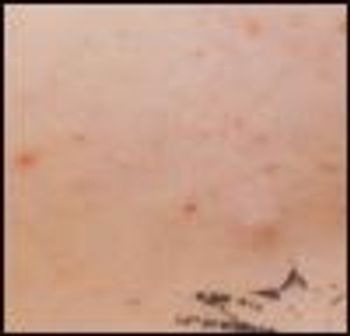
The areas of hypopigmentation on this 4-month-old girl are sequelae of eczema. The rash had developed on the infant’s upper extremities in the bilateral antecubital and popliteal fossae at 1 month of age. Her cheeks were also affected, although only slightly. Her initial diet consisted of regular infant formula. This was switched to soy formula, which she vomited. She was then given a lactose-free formula, which she tolerated well.




